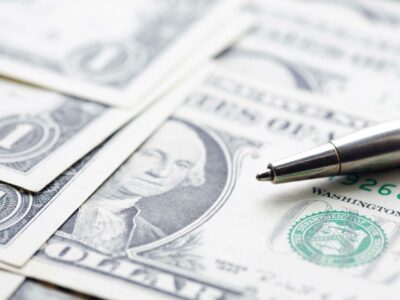
It is calculated by dividing the earnings before interest and taxes (EBIT) by the interest expense. A higher interest coverage ratio signifies that a business is more capable of meeting its debt obligations. The debt-to-equity (D/E) ratio measures the amount of debt a business has relative to its equity.
Access Exclusive Templates
Several factors, including business size, industry, competition, and financial goals, influence the level of leverage a company may undertake. While leveraging borrowed funds can lead to increased returns and potential tax benefits, it can also come with the risk of default and interest payments. Financial leverage refers to the use of borrowed capital to increase the potential return on investments. It involves using debt financing, such as loans or bonds, to buy assets or invest in projects, which expect to generate higher returns than the cost of borrowing. The interest coverage ratio, also known as the times-interest-earned ratio, is perhaps the most well-known risk metric. The interest coverage ratio is very important because it indicates a company’s ability to have enough pre-tax operating income to cover the cost of its financial burden.

Financial Leverage Ratio
- This may require additional attention to one’s portfolio and contribution of additional capital should their trading account not have a sufficient amount of funding per their broker’s requirement.
- Hence, the conclusion is that the use of more debt increases the returns for equity shareholders.
- After all, the goal of every business is to maximize shareholder wealth, and the ROE is the metric of return on shareholder’s investment.
- Because of the risks of using leverage, it’s important to compare the advantages and disadvantages and determine whether financial leverage truly makes sense for your financial circumstances and goals.
- First, from the standpoint of management, companies that are run by aggressive leaders tend to use more financial leverage.
- Financial leverage has value due to the interest tax shield that is afforded by the U.S. corporate income tax law.
Perhaps one of the biggest risks of financial leverage is that it can lead to bankruptcy. Any business (or individual) can enter bankruptcy if it becomes unable to meet its rising debt obligations. A leverage ratio higher than 1 can cause a company to be considered a risky investment by lenders and potential investors, while a financial leverage ratio higher than 2 is cause for concern. The fixed charge coverage ratio measures the times the company’s fixed charges, like interest, rent, insurance premiums, etc., are covered by the business’s earnings.
What is operating leverage?
It is calculated as the percentage change in EPS divided by a percentage change in EBIT. For example, if funds are raised through long-term debts such as bonds and debentures, these instruments carry fixed charges in the form of interest. Usually, the ratio exceeds the US average debt to equity ratio of 54.62%. Depending on the size of the company, businesses will sometimes take on hundreds of thousands of dollars of debt in order to leverage it and purchase assets. While that might seem like risky business, it’s the name of the game for competing corporations looking to outgrow each other. For the most part, leverage should only be pursued by those in a financial position to absorb potential losses.
- 11 Financial may only transact business in those states in which it is registered, or qualifies for an exemption or exclusion from registration requirements.
- However, if the sales are low, profits can be maintained only if the firm has low operating leverage.
- Since then, the use of leverage has become increasingly prevalent in financial markets, and today it is a widely accepted practice.
- Ask a question about your financial situation providing as much detail as possible.
- However, it’s essential to strike a balance between risk and return, as excessive leverage can also heighten risks.
Consumer Leverage Ratio
Using leverage also allows you to access more expensive investment options that you wouldn’t otherwise have access to with a small amount of upfront capital. For example, if a public company has total assets valued at $500 million and shareholder equity valued at $250 million, the equity multiplier is 2.0 ($500 million ÷ $250 million). This shows the company has financed half its total assets with equity. The equity multiplier attempts to understand the ownership weight of a company by analyzing how assets have been financed. A company with a low equity multiplier has financed a large portion of its assets with equity, meaning they are not highly leveraged. You can also compare a company’s debt to how much income it generates in a given period using its Earnings Before Income Tax, Depreciation, and Amortization (EBITDA).

- Capital includes both interest-bearing debt and shareholders’ equity.
- Corporate management tends to measure financial leverage by using short-term liquidity ratios and long-term capitalization, or solvency ratios.
- Debt increases the company’s risk of bankruptcy, but if the leverage is used correctly, it can also increase the company’s profits and returns—specifically its return on equity.
- In the case of high operating leverage, if the sales are high, then companies’ benefit magnifies with each additional sale.
- Excessive leverage can lead to financial distress, increased interest expenses, and decreased flexibility.
- With various types of leverage available – financial, operating, and combined – businesses can adopt different strategies to achieve their goals.
- There are many industry sectors in which companies operate with a high degree of financial leverage.
There are several ways to calculate the extent of leverage used by a company in fundamental analysis, depending on the type of leverage being measured. Debt financing is seen as an alternative to equity https://www.bookstime.com/articles/plant-assets financing, which would involve raising capital through issuing shares via initial public offering (IPO). This is because there may not be enough sales revenue to cover the interest payments.


Bankrate.com is an independent, advertising-supported publisher and comparison service. We are compensated in exchange for placement of sponsored products and services, or by you clicking on certain links posted on our site. Therefore, this compensation may impact how, where and in what order products appear within listing categories, except where prohibited by law for our mortgage, home equity and other home lending products. Other factors, such as our own proprietary website rules and whether a product is offered in your area or at your self-selected credit score range, can also impact how and where products appear on this site.
If the owner of ABC Art Supplies wants to know their current financial leverage ratio, the first step they would need to complete is to add together all of the debt listed on their balance sheet above. If you can envision a balance sheet, financial leverage refers to the liabilities listed on the right-hand side of the balance sheet. Operating leverage refers to the mix of fixed assets listed on the left-hand side of the balance sheet, including the factory, maintenance, and equipment successful use of financial leverage requires a firm to costs. Fixed costs are those costs that don’t change with a change in the number of goods produced, like rent, depreciation, interest charges, etc. Variable costs are those costs that change with a change in the number of goods produced, like the cost of raw materials, electricity costs, etc. A business with low variable and high fixed costs is considered to be highly leveraged, which is common in manufacturing industries as they need a large number of machinery to produce goods.